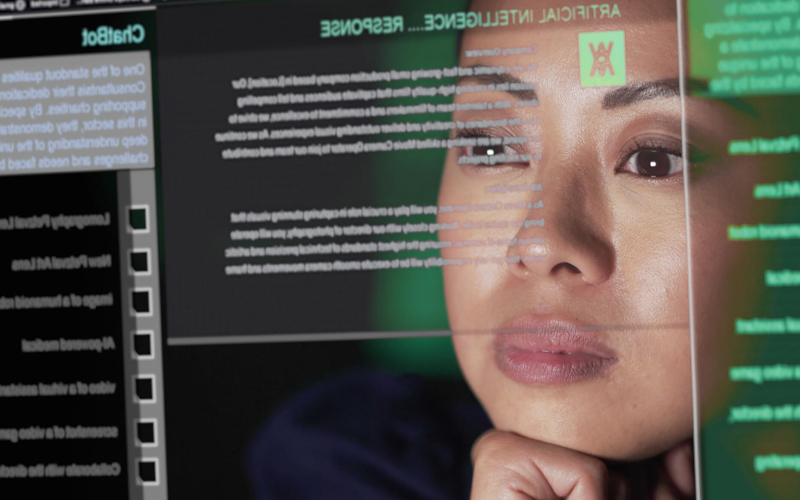Retail theft costs the global industry billions annually, yet traditional loss prevention strategies are failing to keep pace with increasingly sophisticated theft tactics.
This is where AI for inventory management emerges as a game-changer. By harnessing advanced algorithms, machine learning (ML), and computer vision, AI is transforming the overall theft prevention framework.
It enhances inventory accuracy and enables proactive security measures, allowing retailers to detect suspicious activities in real-time and minimise losses more effectively. With AI, retail theft solutions are becoming smarter, faster, and more adaptive to evolving threats.
AI-powered retail theft prevention solutions
As retail theft continues to pose a significant challenge, AI is proving to be a powerful tool in transforming loss prevention strategies.
AI-driven surveillance and anomaly detection
AI-powered surveillance systems leverage advanced computer vision techniques, such as convolutional neural networks (CNNs) and recurrent neural networks (RNNs), to analyse live video feeds and detect anomalous behaviour indicative of theft or fraud.
Object detection models like YOLO (You Only Look Once) and Faster R-CNN track individuals and recognise suspicious activities such as loitering or item concealment. Additionally, deep learning models, optical flow algorithms, and pose estimation techniques aid in identifying unusual gait patterns or erratic movements.
Many retail giants globally have adopted AI-driven systems that enable checkout-free shopping, generate real-time alerts, reduce reliance on manual monitoring, and improve security response efficiency in high-risk environments.
Network analysis and fraud detection
AI-powered fraud detection systems use network analysis and link prediction algorithms to identify patterns indicative of organised retail crime (ORC). By representing transactions as graph structures, AI can detect anomalies such as repeated high-value purchases by the same individual, which may signal illicit resale operations.
These AI-driven insights empower retailers and law enforcement to take proactive measures, disrupt ORC activities, and strengthen financial security.
AI-powered POS fraud detection
Retailers are implementing sophisticated AI algorithms within point-of-sale (POS) infrastructure to identify fraudulent transaction patterns. By leveraging supervised and unsupervised ML models such as isolation forests, autoencoders, and recurrent neural networks, these systems establish baseline transaction profiles, enabling precise anomaly detection.
Graph-based analysis helps uncover collusion patterns between employees and customers, revealing coordinated fraudulent activities. With real-time fraud detection, retailers can minimise revenue loss and enhance internal security measures.
Implementing AI for retail inventory protection
Implementing AI-driven retail theft prevention and inventory management requires a strategic, scalable, and secure approach to enhance operational efficiency and minimise losses. This includes:
Integration with IoT and smart sensors
AI-driven loss prevention systems leverage IoT-enabled smart shelves, RFID tags, and real-time tracking sensors to enhance inventory accuracy and security:
- Smart shelves use weight sensors and computer vision to detect anomalies in product placement or removal.
- RFID tags provide continuous, item-level tracking, and monitoring of merchandise movement across the store.
- Real-time tracking sensors detect unauthorised removals and stock discrepancies instantly.
By integrating AI-driven analytics with IoT infrastructure, retailers can automate anomaly detection, trigger real-time theft alerts, and optimise loss prevention strategies precisely.
Centralised cloud-based AI platforms
Cloud-based AI platforms offer centralised visibility into loss prevention strategies by aggregating data across multiple store locations. These platforms use distributed computing, AI-driven anomaly detection, and predictive analytics to enhance security measures at scale:
- Centralised data aggregation: AI consolidates transaction logs, surveillance footage, and inventory records, enabling cross-store pattern recognition.
- Real-time threat detection: ML models continuously analyse data streams, identifying suspicious activities and triggering security alerts.
- Predictive analytics and risk assessment: AI models detect emerging theft trends and assess high-risk locations, allowing retailers to strengthen security measures proactively.
- Seamless deployment and scalability: Cloud infrastructure enables the rapid deployment of AI-based theft prevention solutions across retail networks.
By integrating AI with cloud computing, retailers gain a proactive, scalable, and data-driven approach to loss prevention, minimising inventory loss and enhancing operational security.
AI-driven workforce optimisation
AI enhances retail security by optimising employee scheduling based on theft risk assessments. Advanced ML algorithms analyse historical theft patterns, customer foot traffic, and store layout vulnerabilities to identify high-risk periods and locations:
- Intelligent scheduling: AI forecasts peak theft windows, ensuring security personnel are strategically positioned.
- Adaptive resource allocation: Real-time data analysis allows retailers to adjust workforce distribution dynamically.
- Automated risk assessment: AI continuously refines risk models based on new incident reports, enhancing predictive accuracy.
With AI-driven workforce optimisation, retailers can strengthen theft prevention while maintaining cost-efficient security operations.
The future of AI in retail theft prevention
As AI evolves, the future of AI in retail inventory and theft prevention will bring more advanced innovations. Key developments include:
Edge AI processing
Advancements in edge computing will enable real-time analysis on IoT sensors and in-store servers, reducing latency and cloud dependency. Optimised AI frameworks will allow retailers to deploy lightweight models for instant anomaly detection and threat mitigation at the edge.
Enhanced human-AI collaboration
Augmented intelligence will enhance security operations with AI-driven insights for faster, more precise decision-making. Advanced computer vision models powered by CNNs will enable real-time surveillance, improving the detection of suspicious behaviours. By combining human expertise with AI analytics, retailers can accelerate response times and optimise resource allocation during critical incidents.
How can Infosys BPM help?
AI-driven loss prevention is transforming the retail industry, offering a smarter and more proactive approach to tackling theft and operational inefficiencies. By leveraging ML, computer vision, and IoT, retailers can not only minimise losses but also enhance inventory accuracy, optimise workflows, and maximise profitability.
As AI technology evolves, staying ahead of retail challenges requires strategic partnerships. Infosys BPM offers digital solutions for retail businesses with advanced AI-powered solutions for retail crime prevention, inventory management, and operational resilience.
By partnering with Infosys BPM, retailers can unlock AI’s full potential and create a more secure, efficient, and future-ready retail ecosystem.







